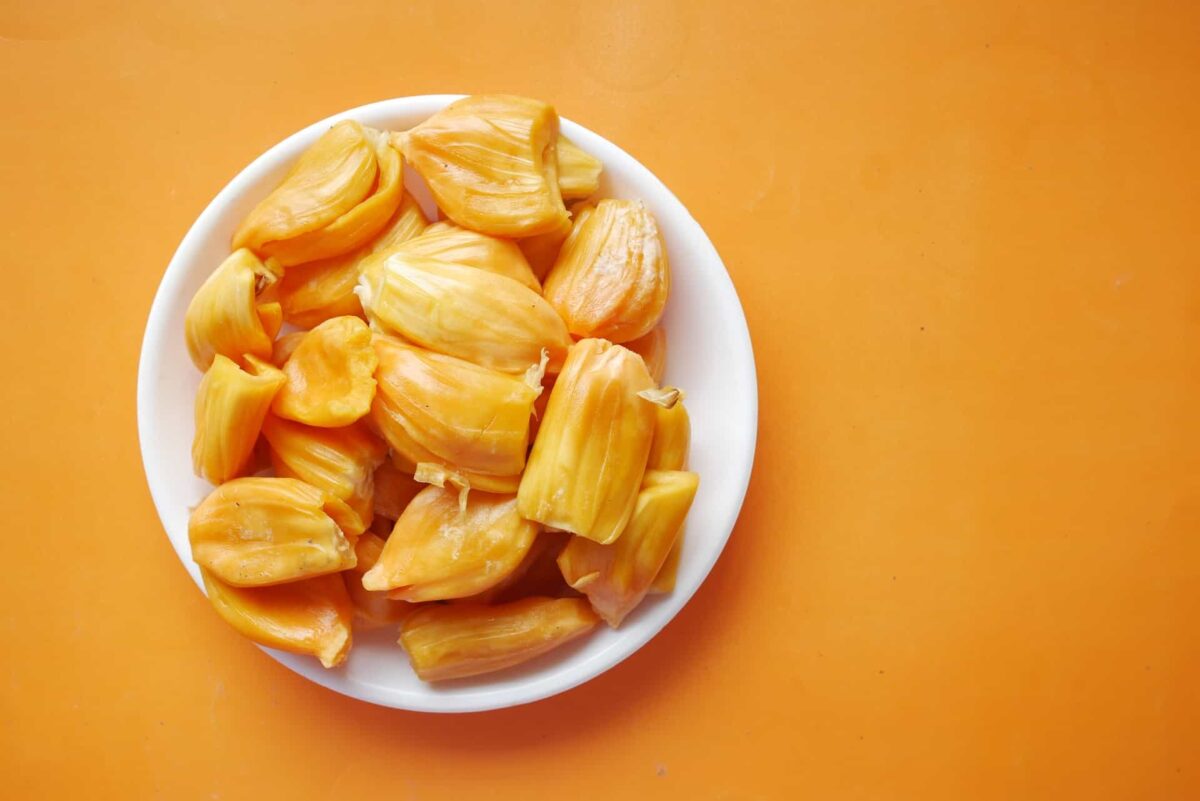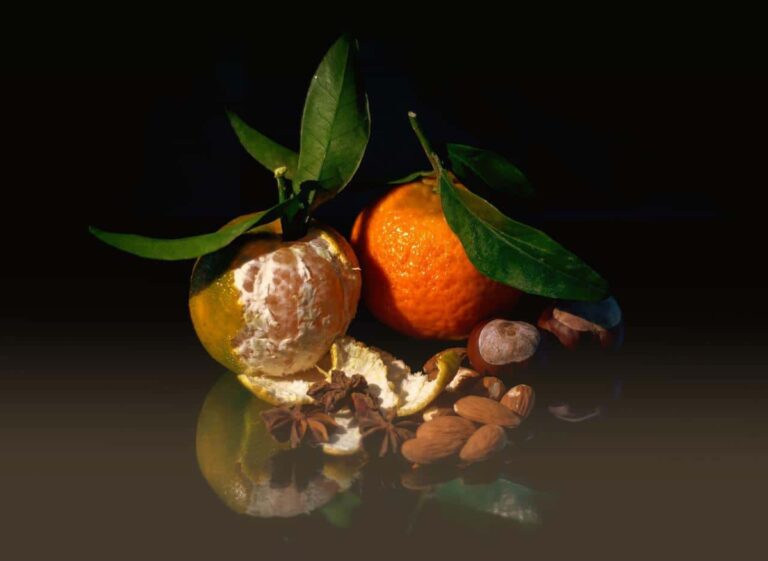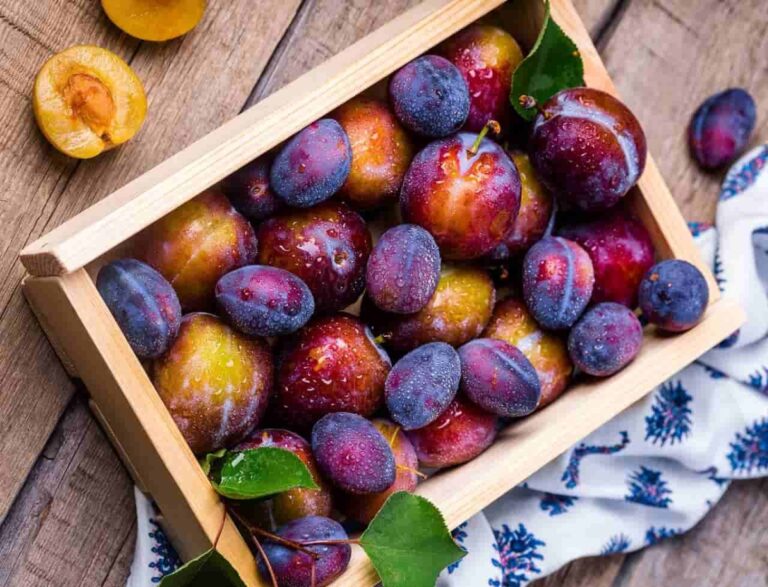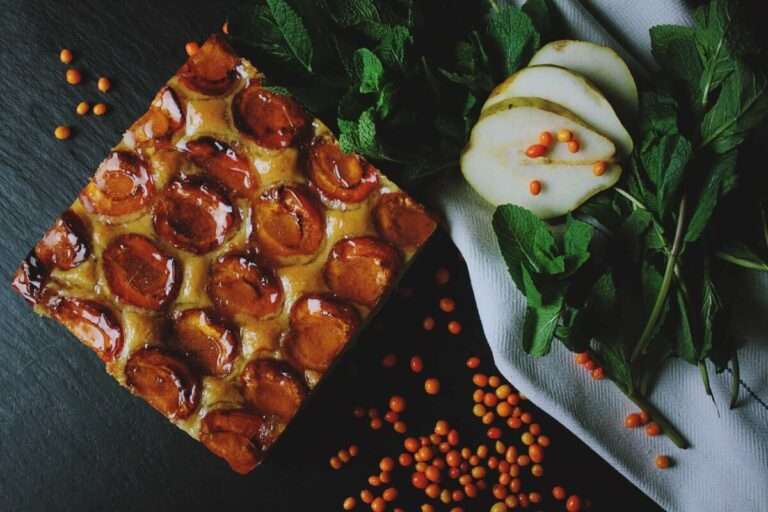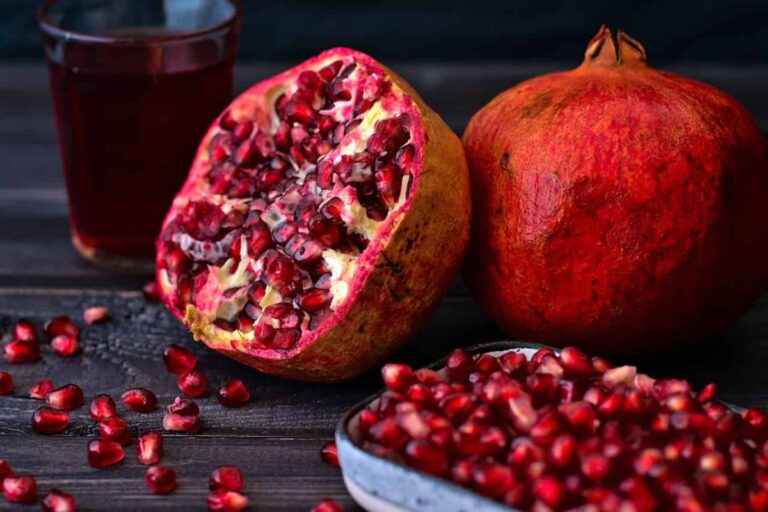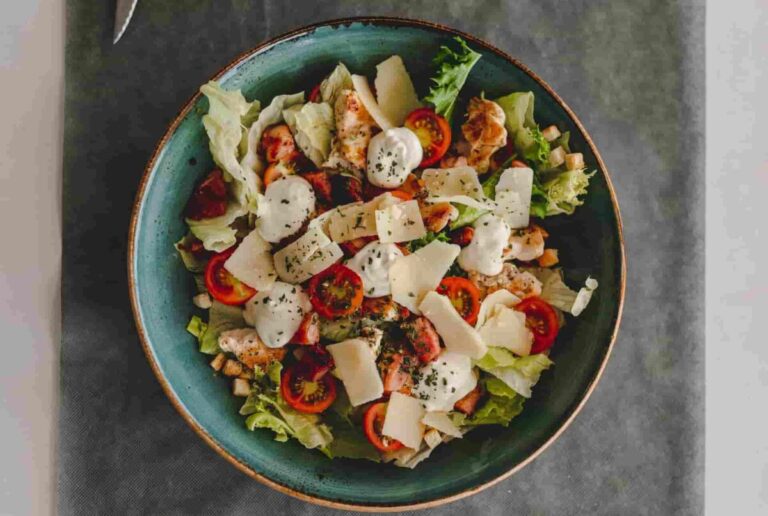Jackfruit 101- kitchen insights for you
Did you know that when the jackfruit is ripe, it is consumed as a fruit, but when it is unripe, it is cooked and consumed as a vegetable?
- The edible portion of jackfruit is known as a “aril,” and it is yellow in colour. It is a flower, and the petals that are edible are what we eat. One jackfruit may have up to hundreds of blossoms on it, and a single tree can produce up to two hundred and fifty jackfruits annually.
- The seeds of the jackfruit may be eaten and are considered to be rather nutritious. You could even boil them and make an admirable try at making hummus with them. It comes with a very strong recommendation. When roasted, the seeds take on a flavour that is between between a chestnut and a brazil nut. You may also bake or roast them in the oven. They are also capable of being milled into a flour.
- The Western Ghats of India are home to the original woodlands where this fruit may be found. Was quickly transmitted to other regions of India, as well as to southeast Asia, the East Indies, and eventually the Philippines. Additionally, it is often planted in eastern and central Africa, and it is also grown in Brazil and Surinam with some regularity.
- The name “jackfruit” originates from the Portuguese word “jaca,” which was borrowed from the chakka word used in the Malayalam language. In his book published in 1563 titled Colóquios dos simples e drogas da India, the Spanish physician and naturalist Garcia de Orta coined the word “jackfruit” that is now often used in English.
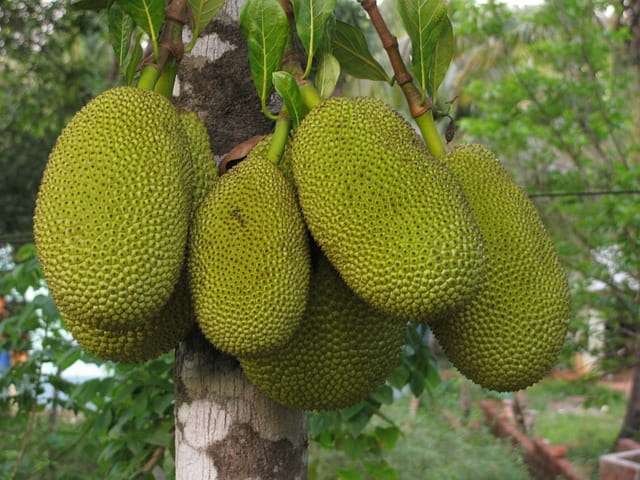
Jackfruit nutrition values and health benefits
- Jackfruit is particularly rich in a number of important micronutrients. One cup of the fruit has 739 mg of potassium, which is equivalent to around 15.7% of the daily dose. This is good news for anyone who are wanting to increase their potassium intake. In addition, one serving of raw jackfruit has a richness of vitamin C as well as decent quantities of vitamin A, magnesium, manganese, and copper. This is all included in the same quantity of fruit.
- Jackfruit is rich in vitamin A due to the presence of carotenoids, which are the pigments responsible for the fruit is yellow hue. Carotenoids, like other antioxidants, help your body function properly while also protecting your cells from harm. They have the potential to assist in the prevention of illnesses such as cancer and heart disease, in addition to visual disorders like as cataracts and macular degeneration.
- In spite of the fact that it is often used in lieu of pig or chicken in a variety of primary meals, jackfruit simply does not have the same level of protein content as animal products. When compared to a typical serving of meat, which typically contains 20 or more grammes of protein, one cup of raw jackfruit only contains around three grammes of protein. It is important to point out, however, that jackfruit has a higher protein content than the majority of other fruits.
- Jackfruit is an excellent source of fibre and does not contain any saturated fat. Eating foods that are rich in fibre may help reduce cholesterol levels by as much as 10%, according to the opinions of the various specialists. If you suffer from high cholesterol, you might think about including jackfruit on your shopping list. Jackfruit contains potassium, which helps to control blood pressure and lowers the risk of cardiovascular events including heart attacks and strokes.
- Additionally, the vitamin C included in jackfruit bolsters the immune system, helps the body repair damaged cells, and improves its ability to absorb iron and other vital minerals. Vitamin C supplementation is beneficial for those who are exposed to cigarette smoke, engage in strenuous physical activity, or live in very cold environments.
- It is possible that increasing the amount of magnesium in your diet can lead to improved sleep quality as well as a decreased chance of experiencing insomnia. This may be particularly true for older persons, who are at a greater risk for magnesium insufficiency. About 48 mg of magnesium may be found in one serving of jackfruit.
- For healthy bone development, manganese is an absolutely necessary vitamin. Higher blood manganese levels were shown to have a favourable association with bone mineral density and a decreased incidence of fractures in postmenopausal women who participated in the studies.
- Jackfruit may be used on occasion in place of meat as a healthy and efficient strategy to reduce calorie and saturated fat intake while simultaneously increasing one’s intake of fibre and other essential minerals. Eating fewer foods high in saturated fat and increasing the amount of fibre in one’s diet has been linked to an improvement in insulin sensitivity. This change in eating habits has the potential to have a favourable impact on the prevention of type 2 diabetes.
- There are very few people that are allergic to jackfruit, yet it is possible to be one. A preexisting allergy to other types of tropical fruits, latex, or birch trees may increase the risk of developing an allergy to jackfruit in some individuals.
- Some medical professionals are of the opinion that the compounds found in jackfruit could cause an adverse reaction to the anaesthetics and drugs that are used during surgical procedures. If you are scheduled to have surgery in the near future, it is probably recommended for you to avoid eating jackfruit and instead contact your physician before consuming it.
100g of jackfruit has 94 calories (393kj), 1.5g protein, 0.3g fat, and 24g carbs, including 2g fibre.
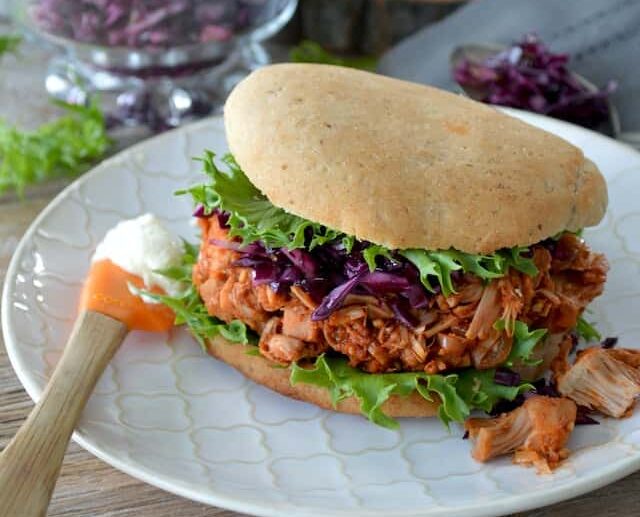
How to store jackfruit and how to buy them
- The nutritional profile of jackfruit is among the most astounding of all fruits. This fruit has an adequate quantity of calories and fibre, both of which are essential for maintaining a healthy body. Yes, we are aware that it might be upsetting to learn that something so tasty and helpful can also go bad. Once the jackfruit has reached full maturity, it has a rather limited shelf life. If you want to increase the amount of time that your fruits may remain edible after being picked, one option you have is to store them correctly.
- You may let the jackfruit sit out on your countertop or put it in your cupboard for a few days until it is mature enough to eat. Before moving on to the next phase in the storage procedure, you need to let any unripe jackfruit mature first. Allow the jackfruit to ripen at room temperature according to its natural schedule.
- After it has reached its maximum ripeness, keeping it at room temperature for any longer will not make its shelf life any longer. If you store jackfruit for more than three days in your cupboard, the fruit may get spoiled. It is best to store jackfruit at room temperature, but you should consume it within two to three days at the most.
- A cool climate is crucial for your fruits. Jackfruit maintains its quality when kept in a cold atmosphere along with other settings that are ideal. Keep jackfruit in cool locations. The jackfruit will stay for a longer period of time in cooler, less hot environments. When temperatures are high, it is important to minimise your time spent in contact with jackfruit. Put the jackfruit in a cool place away from any sources of heat.
- If you want to prevent germs from growing on your jackfruit, you should store it in dry places. An abundance of moisture provides ideal conditions for the growth of bacteria. In order to keep harmful germs from growing on your fruit, you need to keep it dry. It is recommended that jackfruit be kept at a cool temperature during storage. For optimal preservation, jackfruit should be stored in a cool, dry place.
- It would be to your advantage to go with the refrigeration option rather than one of the other possibilities. It is very advised that jackfruit be refrigerated. If you put jackfruit in the refrigerator, you may extend its shelf life by as much as a week. Put the jackfruit that has been sliced up into airtight containers and store it in the refrigerator. It is recommended that you store the fruit in the crisper drawer located in the refrigerator. It is recommended that you put jackfruit in the refrigerator in order to extend its shelf life.
- The jackfruit is an excellent candidate for being frozen. It is not a good idea to put the entire fruit in the freezer if you have already made the decision to do so. We strongly suggest that you do not save it in its raw form since doing so will not be very effective. It does not imply that you cannot preserve the raw fruit in its whole; nevertheless, doing so is not suggested. It is recommended that the jackfruit be sliced into smaller pieces before being stored in containers that are airtight. Put the sealed jars in the refrigerator to chill.
- The shelf life of jackfruit is around two to three days when stored at room temperature or in the pantry. You need to make sure the fruit is kept in the appropriate conditions so that it may enjoy a higher quality for a longer period of time. Before putting unripe jackfruit in the refrigerator, it must first be allowed to ripen at room temperature. Because the process of ripening is slowed down in your refrigerator, your fruit will keep for a much longer period of time.
- Inspect the jackfruit for the signs of quality that are outlined in the following paragraphs. The following signs should serve as a warning that you should stop eating the fruit immediately.
- Examine the outward manifestation. Toss any jackfruit that has any black spots anywhere on its surface. Jackfruit with dark spots should not be consumed.
- When a jackfruit rots, it becomes watery and mushy all throughout its inside. It is imperative that you do not ingest a jackfruit that has these indicators.
- You should toss the jackfruit if it smells, tastes, or feels odd in any way. This includes any combination of the three senses.
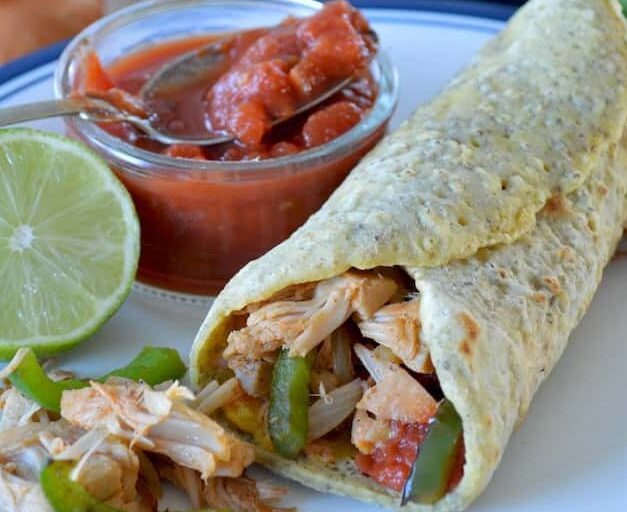
Cooking techniques, secrets, and tips from the kitchen
- Wear gloves and cover your cutting board with plastic wrap before beginning to chop a ripe jackfruit. Using an oiled, wide knife, cut the jackfruit into 2-inch-thick slices. Using a sharp knife, halve each slice and run it along the line separating the pods to separate them. Remove the white fibres and pod tip by separating them from the pod’s skin. Remove the seeds and seed skin from the pods by slicing them in half along their length.
- Common preparation methods for jackfruit include cooking it in a pressure cooker or by boiling. First, cover a wide workspace with newspaper, and then cut the jackfruit in half horizontally along its length. Before using, boil the jackfruit chunks for 45 minutes, or until the flesh inside is tender and somewhat stringy, comparable to chicken. If you have a pressure cooker, 10 minutes is often plenty. After cooking the jackfruit, peel away the skin to reveal the seeds and the pods that contain them. jackfruit
- The seed pods and the meaty, stringy portions between the seed pods and the skin may be consumed in moderation. This should all be pulled out and the seeds separated. Cook with the “meat” or put it in a bag and freeze it. Many individuals choose to discard jackfruit seeds, however they are completely edible if cooked correctly.
- Raw seeds may be dangerous for those who use certain medications, including common over-the-counter painkillers and prescription blood thinners. Similar to how pumpkin seeds are roasted, roasting is the ideal technique for completing the cooking of the seeds. Options include incorporating them into salads or smoothies, blending them into hummus, grinding them into flour, or consuming them as a snack.
- Using a pan to cook jackfruit is a fast and efficient technique of preparation. Simply sauté sliced onions in a little bit of oil until transparent, then add minced garlic and one chopped red pepper and simmer for five to seven minutes. In a large mixing bowl, combine 1 can of drained jackfruit, a splash of water, and a couple of tablespoons of barbecue sauce. Cook for 10 minutes, stirring regularly and breaking up the jackfruit with a spoon, over medium heat, or until the jackfruit is cooked. Filling for jackfruit tacos that may be served with avocado slices and corn tortillas.
- Look for jackfruit that is still fresh and unripe, or choose jackfruit that has been canned in water or brine. As you would with cooked chicken, shred the jackfruit and sauté it in a little amount of oil with cumin, chilli powder, salt, garlic, and onion until the fruit is transparent and soft. Incorporate the mixture into the taco shells. Garnish the dish with cilantro, avocado, cheese, and sliced red onion. When using it as a substitute for meat, pair it with high-protein foods such as rice and beans to ensure that you meet your daily protein requirements.
- Southeast Asians have traditionally enjoyed jackfruit sago, a sweet soup made with sago. The soup is served both hot and cold, which is quite unusual for the area. In any event, the soup is unlike other American cuisine, making it a good option for the aspiring gourmet. Include tapioca pearls with your jackfruit slices, since this will give your soup a distinct texture that would otherwise be impossible to produce! Experiment with the traditional pairing of jackfruit and coconut to get a richer flavour.
- It is important to note that the flavour of jackfruit is often compared to that of tutti-frutti ice cream; thus, the thought of utilising fresh jackfruit to make homemade ice cream may seem too wonderful to be true. The wonderful flavour is not deceiving, however, since jackfruit provides authentic pineapple and mango qualities that cannot be duplicated by artificial flavouring or flavouring chemicals. For the greatest results, make sure to incorporate the fruit into more than just the base; fresh jackfruit slices will add colour and texture to the final meal.
- Try this for a quick snack or a more healthy breakfast. Blend some fresh, uncooked jackfruit with your favourite frozen dessert to provide a nutritious, sweet flavour. Alternative for a sweet smoothie, combine ripe jackfruit, yoghurt, and other fruits in a blender until smooth and creamy.
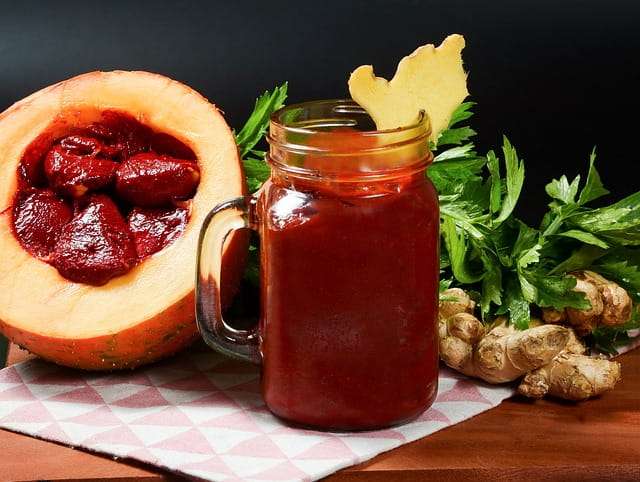
History of jackfruit from the beginning until today
- No one knows where jackfruit originated, although it is indigenous to Western Ghats forests. Low-altitude cultivation occurs in India, Burma, Ceylon, southern China, Malaya, and the East Indies. In the Philippines, it is naturalised.
- It was established in Hawaii before 1888, but it is rare there, on other Pacific islands, and in tropical America and the West Indies. Northern Brazil and Surinam presently have more of it than everywhere else in the New World.
- The Philippines call jackfruit langka and nangkà. In ginataang langka, unripe fruit is cooked in coconut milk and eaten with rice. The ripe fruit is utilised in halo-halo and turon. Mature fruit may also be kept in syrup or dried. The seeds are also cooked.
- Indonesia and Malaysia call jackfruit nangka. Ripe fruit is sold separately and savoured alone, or sliced and blended with shaved ice to make es campur or es teler. Kripik nangka is dried and fried mature jackfruit. The starchy seeds are boiled and eaten with salt as beton. Young (unripe) jackfruit is cooked in gulai nangka.
- Thailand is a big producer of jackfruit, which is sliced, processed, canned in a sweet syrup, and sent to other nations, most often North America and Europe.
- Chakkavaratti (jackfruit jam) is made by marinating jackfruit slices in jaggery for months. Consumed alone or with rice. The juice is directly or indirectly ingested. Sometimes, concentrated juice is made into candy. The roasted seeds are eaten with salt and chiles. They also make spicy rice sides. Jackfruit paste dried in the sun makes a chewy natural candy.

